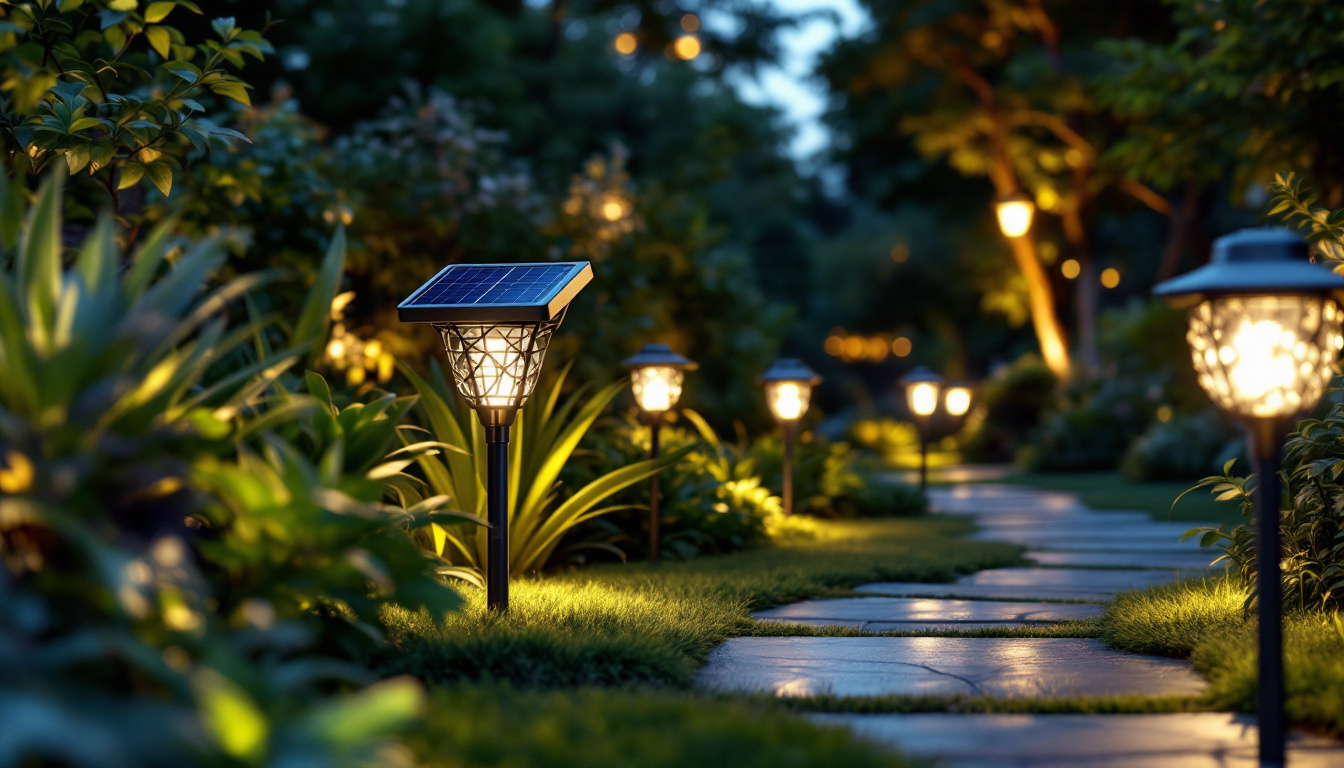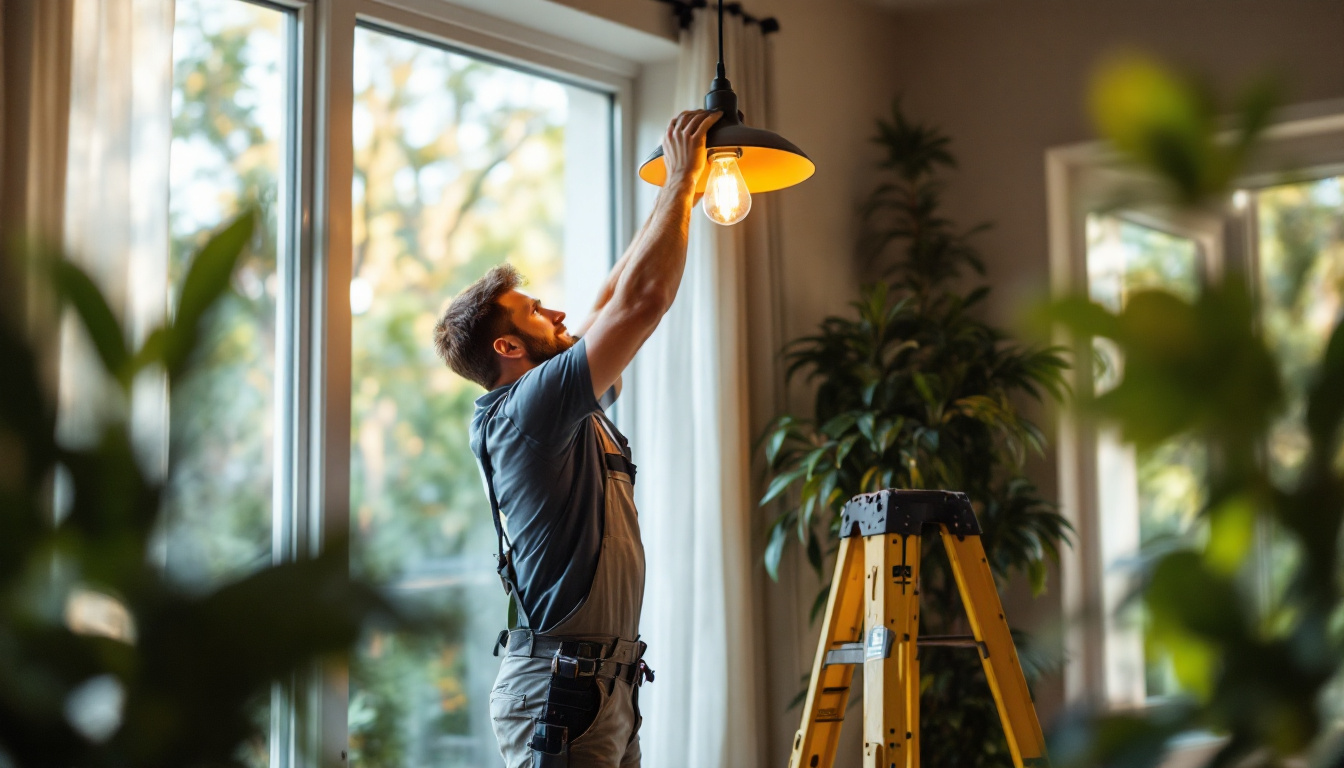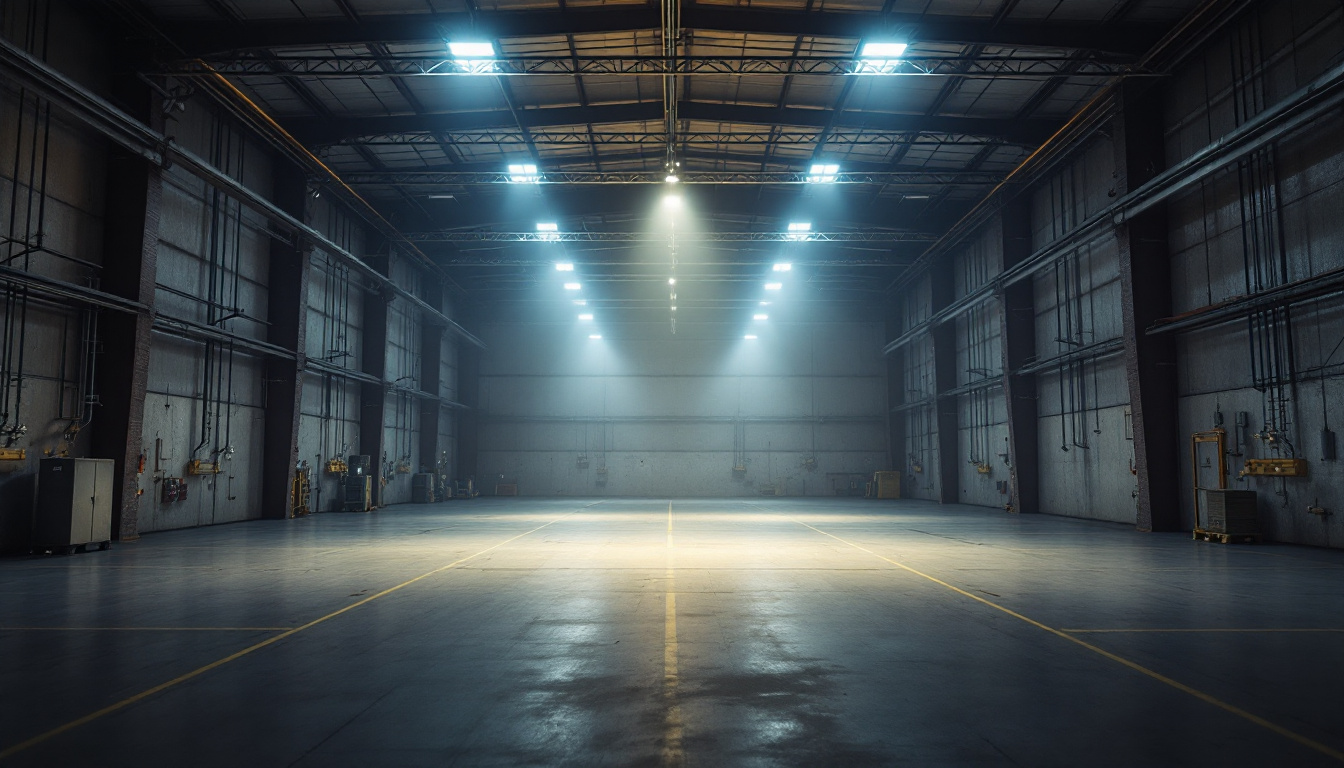

As the demand for sustainable and energy-efficient solutions continues to rise, solar-powered landscape lights have become a popular choice among homeowners and businesses alike. However, for lighting contractors, navigating the installation and maintenance of these systems can present unique challenges. This guide aims to highlight common mistakes to avoid when working with solar-powered landscape lighting, ensuring that contractors deliver optimal results for their clients.
Before delving into the pitfalls of solar-powered landscape lights, it’s essential to grasp the underlying technology. Solar lights operate by converting sunlight into electricity through photovoltaic cells. This energy is stored in batteries and used to power the lights after dark. Understanding this process is crucial for effective installation and troubleshooting. The efficiency of solar lights can vary significantly based on the quality of the photovoltaic cells used, which directly impacts the amount of sunlight converted into usable energy. Additionally, advancements in solar technology have led to the development of more efficient batteries that can store energy for longer periods, allowing for extended use even on cloudy days.
One of the most significant mistakes contractors make is opting for low-quality solar lights to cut costs. While these products may have a lower upfront price, they often lack durability and efficiency. Investing in high-quality components ensures longevity and better performance, ultimately leading to satisfied customers. Furthermore, premium solar lights often come with enhanced features such as adjustable brightness settings and motion sensors, which can add functionality and security to outdoor spaces.
When selecting solar lights, consider factors such as battery capacity, solar panel efficiency, and the materials used in construction. High-quality products are more likely to withstand harsh weather conditions and provide consistent illumination. Additionally, reputable manufacturers often offer warranties or guarantees on their products, providing peace of mind for both contractors and homeowners. This assurance can be a significant selling point, as it reflects the manufacturer’s confidence in their product’s longevity and performance.
Proper placement and orientation of solar lights are critical for maximizing their effectiveness. A common error is installing lights in shaded areas, where they receive insufficient sunlight to charge effectively. It’s essential to assess the landscape and choose locations that receive ample sunlight throughout the day. Factors such as nearby trees, buildings, and other structures can cast shadows that impede solar charging, so careful planning is necessary to avoid these pitfalls.
Contractors should also consider the angle of the solar panels. Adjusting the angle to face the sun directly can significantly enhance charging efficiency, ensuring that lights operate at their brightest during the evening hours. Moreover, the time of year can affect solar panel performance, as the sun’s path changes with the seasons. Therefore, it’s beneficial to revisit the placement and orientation of solar lights periodically to ensure they are optimized for maximum exposure. This attention to detail can make a substantial difference in the overall performance and reliability of solar lighting systems, leading to greater customer satisfaction and reduced maintenance issues over time.
Design plays a pivotal role in the success of solar-powered landscape lighting. A well-thought-out design not only enhances the aesthetic appeal of a property but also ensures functionality. Here are some common design-related mistakes to avoid:
One of the most prevalent mistakes is failing to consider the existing landscape when designing a lighting plan. Each property has unique features, such as trees, pathways, and architectural elements, that should influence the lighting design. Ignoring these aspects can lead to ineffective lighting that does not highlight the property’s best features.
Contractors should take the time to walk the property and identify focal points that would benefit from illumination. For instance, highlighting a beautiful tree or a decorative pathway can create a more inviting atmosphere. Additionally, incorporating the natural contours and elevations of the land can add depth and dimension to the lighting design, making the landscape feel more dynamic and alive. This thoughtful approach not only enhances visual interest but also ensures that the lighting serves a practical purpose, guiding visitors safely through the space.
Finding the right balance of light is crucial. Overlighting can create harsh glare, while underlighting can leave areas inadequately illuminated. Both scenarios can detract from the overall appeal of the landscape.
To avoid this mistake, contractors should consider the purpose of the lighting. For instance, pathway lights should provide enough illumination for safety without being overly bright. Using a combination of different light types and intensities can help achieve a harmonious balance. Moreover, the color temperature of the lights can significantly impact the ambiance; warmer tones can create a cozy, inviting feel, while cooler tones may impart a more modern, sleek appearance. By experimenting with various light placements and settings, designers can create a layered lighting effect that enhances the landscape’s beauty while also fulfilling its functional requirements.
Proper installation techniques are vital to the performance and longevity of solar-powered landscape lights. Mistakes made during installation can lead to frequent repairs and dissatisfied clients. Here are some key installation considerations:
Contractors often overlook the importance of ground conditions when installing solar lights. Soil type, drainage, and vegetation can all impact the stability and effectiveness of the lights. For instance, installing lights in sandy or loose soil may require additional support to ensure they remain upright.
Additionally, it’s important to consider drainage. Poor drainage can lead to water pooling around the lights, potentially damaging the electrical components. Taking the time to assess ground conditions can prevent future issues and ensure a successful installation. Furthermore, the presence of roots from nearby plants can also pose a challenge, as they may disrupt the placement of the lights or even damage them over time. A thorough site assessment before installation can help identify these potential pitfalls and allow for a more strategic placement of the lights, ensuring they not only function well but also enhance the overall aesthetic of the landscape.
While solar lights are designed to be user-friendly, improper wiring and connections can lead to malfunctions. Contractors should follow the manufacturer’s instructions carefully and ensure all connections are secure. Loose connections can lead to flickering lights or complete failure.
Moreover, using the correct gauge of wire is essential. Using wires that are too thin can lead to voltage drops, affecting the performance of the lights. Ensuring proper wiring can significantly enhance the reliability of the solar lighting system. It’s also beneficial to use weather-resistant connectors and junction boxes to protect against moisture and corrosion, which can severely impact the longevity of the electrical components. Additionally, testing the system after installation can help identify any issues early on, allowing for adjustments before the lights are fully operational. By prioritizing these wiring techniques, contractors can ensure that their installations not only meet immediate lighting needs but also stand the test of time against the elements and wear.
Even the best-installed solar lights require maintenance and occasional troubleshooting. Contractors should educate clients on how to care for their solar lights to ensure longevity. Here are some common maintenance mistakes to avoid:
Solar panels need to be kept clean to function efficiently. Dust, dirt, and debris can accumulate on the panels, reducing their ability to absorb sunlight. Contractors should advise clients to regularly clean the solar panels with a soft cloth and mild soap to remove any buildup.
Additionally, it’s crucial to check for any obstructions, such as overgrown branches or plants, that may block sunlight from reaching the panels. Regular maintenance can significantly extend the lifespan of solar lights.
The battery is a vital component of solar-powered lights, and neglecting its maintenance can lead to performance issues. Contractors should inform clients about the importance of monitoring battery health and replacing batteries as needed. Typically, batteries should be replaced every few years, depending on usage and quality.
Furthermore, understanding the signs of battery failure—such as dimming lights or inconsistent performance—can help clients address issues before they become significant problems.
Effective communication with clients is essential for successful solar-powered landscape lighting projects. Many contractors fail to educate their clients adequately, leading to misunderstandings and dissatisfaction. Here are some key points to cover:
Clients may have unrealistic expectations regarding the performance of solar lights. It is essential to explain the limitations of solar technology, such as the impact of weather conditions and the need for direct sunlight for optimal performance. By setting realistic expectations, contractors can prevent disappointment and foster trust with their clients.
Additionally, discussing the benefits of solar lighting, such as energy savings and environmental impact, can help clients appreciate their investment.
Contractors should provide clear maintenance guidelines to clients upon project completion. This includes information on cleaning, battery maintenance, and troubleshooting common issues. Providing a simple maintenance schedule can empower clients to take care of their solar lights effectively.
Moreover, offering ongoing support or check-ins can reinforce the contractor-client relationship and ensure that clients feel confident in their solar lighting systems.
Solar-powered landscape lights present an excellent opportunity for lighting contractors to offer sustainable solutions to their clients. However, avoiding common mistakes is crucial for ensuring successful installations and satisfied customers. By understanding the technology, considering design elements, employing proper installation techniques, and maintaining open communication with clients, contractors can elevate their solar lighting projects to new heights.
In the ever-evolving world of landscape lighting, staying informed and adaptable is key. By continuously learning and refining skills, lighting contractors can position themselves as experts in solar-powered solutions, ultimately leading to increased business and client satisfaction.
Ready to enhance your solar-powered landscape lighting offerings and exceed your clients’ expectations? At LumenWholesale, we provide lighting contractors with the highest quality, spec-grade lighting products at competitive wholesale prices. Say goodbye to local distributor markups and hello to a vast selection of reliable lighting solutions that meet rigorous industry standards. Plus, with the convenience of free shipping on bulk orders, you can secure premium lighting for your projects at the best value — no hidden fees, no compromises. Elevate your lighting game and give your clients the sustainable brilliance they deserve. Wholesale Lighting at the Best Value is just a click away.

Discover the top strategies lighting contractors use to maximize efficiency and creativity with T5 lighting systems.

Discover the ins and outs of solar lighting tailored specifically for lighting contractors.

Discover the pitfalls lighting contractors often encounter with high bay light spacing.

Discover why LED fluorescent tube light fixtures are a game-changer for lighting contractors.
Get notified when NEW deals are released.
Optimize your budget with wholesale discounts.
Only top-quality, specification-grade lighting products.
No additional costs at checkout - what you see is what you pay.
We understand the unique needs of contractors.